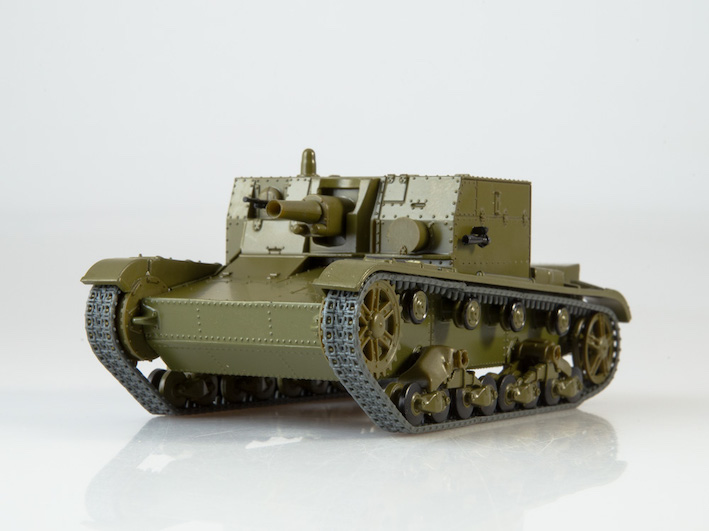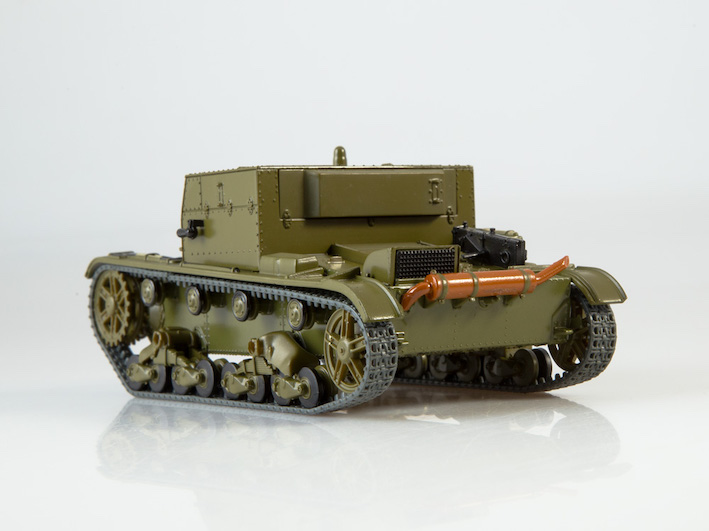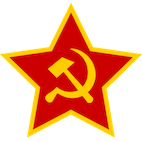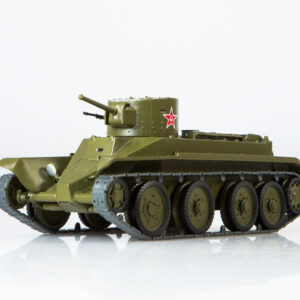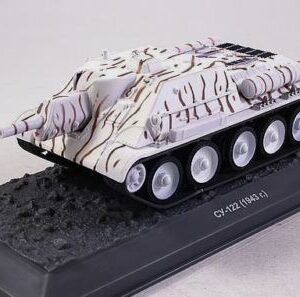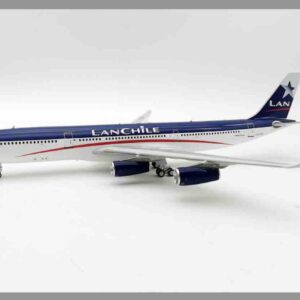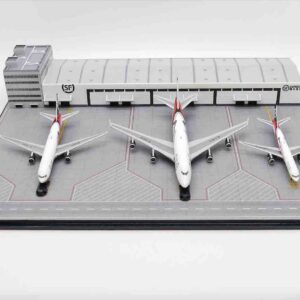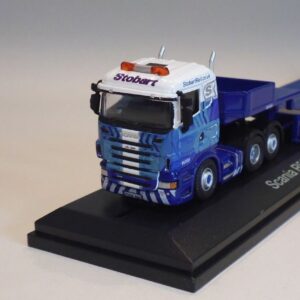MODIMIO Collections – AT-1 Artillery Tank , Red Army (RKKA)
999 Kč
Skladem
Popis
-sběratelský model tanku AT-1 Artillery Tank 1/43 -provedení: kovový model s plastovými částmi
AT-1 Artillery Tank T-26 Light Tank
-
AT-1 — Artillery tank (tank of artillery support) armed with 76.2 mm PS-3 or L-7 tank gun. Two fully armoured vehicles were built and tested in 1935, 10 AT-1 artillery tanks were planned to be built in 1936 but were cancelled (Izhora Works produced 8 armoured hulls for the program).
T-26 byl sovětský lehký tank vycházející z britského tanku Vickers Mark E vyráběný v letech 1931–1941. Celkem bylo vyrobeno cca 12 000 kusů tanku T-26. Ten byl vyráběn v mnoha modifikacích – první varianty byly dvouvěžové a vyzbrojené kulomety, následovaly dvouvěžové varianty, z nichž jedna věž nesla kulomet a druhá dělo, a posléze se přešlo na jednověžový stroj s kanónovou výzbrojí.
- OT-26 – tank vzor 1931, výzbroj: 1 plamenomet
The T-26 tank was a Soviet light infantry tank used during many conflicts of the Interwar period and in World War II. It was a development of the British Vickers 6-Ton tank and was one of the most successful tank designs of the 1930s until its light armour became vulnerable to newer anti-tank guns. It was produced in greater numbers than any other tank of the period, with more than 11,000 units manufactured.
- KhT-26 (OT-26) — Flamethrower variant developed in 1933. Based on the twin-turreted T-26 mod. 1931 tank but using a single turret armed with a flamethrower, the second turret was removed.
| Type | Light infantry tank |
|---|---|
| Place of origin | Soviet Union |
| Service history | |
| In service |
|
| Used by |
|
| Wars |
|
| Production history | |
| Designer | Vickers-Armstrongs, OKMO of Bolshevik Plant in Leningrad |
| Designed | 1928–31 |
| Manufacturer | Factory No. 174 named after K.E. Voroshilov in Leningrad, Stalingrad Tractor Factory |
| Produced | 1931–41 |
| No. built | 10,300 tanks and 1,701 other vehicles |
| Specifications (T-26 mod. 1933) | |
| Mass | 9.6 tonnes (10.6 short tons) |
| Length | 4.65 m (15 ft 3 in) |
| Width | 2.44 m (8 ft) |
| Height | 2.24 m (7 ft 4 in) |
| Crew | 3 (commander, gunner, driver) |
|
|
|
| Armour |
|
|
Main
armament |
45 mm 20K mod. 1932–34 tank gun (122 rds.) |
|
Secondary
armament |
7.62 mm DT tank machine gun (2,961 rds.) |
| Engine | 4-cylinder gasoline flat air-cooledT-26 (Armstrong Siddeley type); engine volume 6,600 cc 90 hp (67 kW) at 2,100 rpm |
| Power/weight | 9.38 hp/t |
| Transmission | single-disc main dry clutch, drive shaft, gearbox with five gears, steering clutches, final drives |
| Suspension | leaf quarter-elliptic springs |
| Ground clearance | 380 mm (1 ft 3 in) |
| Fuel capacity | 290 L (64 imp gal; 77 U.S. gal) [with additional 110-L fuel tank] |
|
Operational
range |
|
| Speed |
|
Rudá armáda, celým názvem Dělnicko-rolnická rudá armáda (rusky Рабоче-крестьянская Красная армия, Raboče-kresťjanskaja Krasnaja armija (РККА nebo RKKA), zkráceně jen Красная армия) byla armáda bolševického Ruska (1918–1922) a posléze Sovětského svazu (1922–1946).
The Workers’ and Peasants’ Red Army, frequently shortened to Red Army, was the army and the air force of the Russian Soviet Federative Socialist Republic and, after 1922, the Union of Soviet Socialist Republics. Beginning in February 1946, the Red Army, along with the Soviet Navy, embodied the main component of the Soviet Armed Forces; taking the official name of “Soviet Army“, until its dissolution in December 1991. The former official name Red Army continued to be used as a nickname by both sides throughout the Cold War.
|
World War II tanks
|
|
|---|---|
| Light |
|
| Medium |
|
| Cruiser |
|
| Infantry |
|
| Heavy | |
| Assault |
|
| Super-heavy |
|

